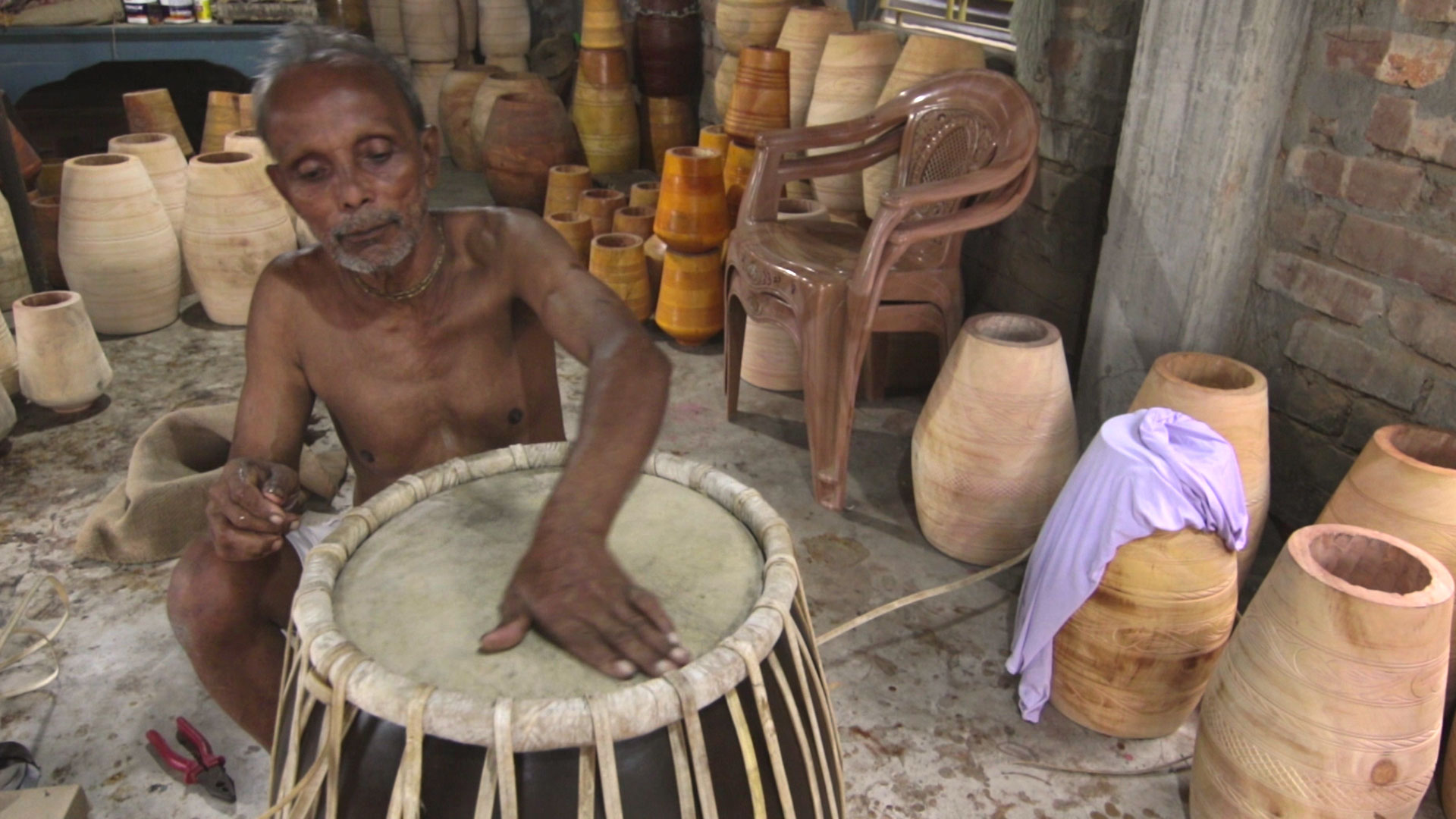The word “Dhak” comes from the Austric word “Dhaka” included in the Sanskrit language. The word later became a part of the Bengali script. The dhak is a big membranophone instrument that originally belongs to South Asia. The dhak has become an integral aspect of the widely loved Bengali festival of Durga Puja, other Bengali rituals and festivities. It would have no festive aura if not for the maddening rhythm of the dhak. The dhak is beaten with two sticks loudly to infuse the frenzied beats into the listeners. These beats are enough to raise the spirits and conjure up the feel of the Durga Puja. Without the instrument, the heavily celebrated festival would have felt sombre.
Previous Kaahon Folk Update:
The sound of the dhak depends on a lot of factors like the shape. The shape varies from almost cylindrical to barrel-like. On one hand, the outer portion of the wood is shaved off and carved to create the barrel shaped instrument. On the other hand, the inner side of it is made to be absolutely hollow.The two ends of the dhak are wrapped up with goat skin on the top and calf skin at the bottom. It is said that using these two types of hides bring out the perfect sound texture of the dhak. The manner of stretching the skin over the mouth of the dhak and lacing it is also an important factor in the kind of sound that will be produced. The more the strings on the side of the dhak are pulled the higher the pitch of the dhak gets. The two sticks that are used to beat the dhak are carefully chiseled and formed out of thin cane or bamboo. Because of the drying session of the wooden structure and the intricate handwork and decoration, it takes around one month to reach the perfection in making the instrument.
The tradition of playing the dhak dates way back to the 17th century when loudspeakers or CDs had no existence. In fact, the barrel-shaped instrument became so popular during that time that dhakis, who play the dhak, stated getting calls quite frequently to perform during festivals and occasions. It was during these times that the sound of the dhak brought the festive mood alive. Dhakis usually come from the outskirts of the city area to earn a good living during pujas and festivals. Many dhakis have their assigned localities and organizations too. Most of these men play the dhak are engaged in other formal professions like farming and others. They are generally poor and the Durga Puja is the time for them to earn some extra money to sustain for a while.
 The art of playing dhak is passed on from one generation to the next though this art is gradually dying out and losing its focus. One of the reasons for this is the uncertain informal nature of this profession. They still teach the children to play the dhak is to preserve the culture and heritage.
The art of playing dhak is passed on from one generation to the next though this art is gradually dying out and losing its focus. One of the reasons for this is the uncertain informal nature of this profession. They still teach the children to play the dhak is to preserve the culture and heritage.
Each part of Durga Puja rituals has a different and unique tune and beat of the dhak right from the arrival of the idols till their immersion. It is played when the idol enters the pandal and even when it exits the pandal on the last day of puja, Dashami. In fact, it is the deafening sound of the dhak that fills the air of immense celebration during the ‘Sandhya Arati’ on Ashtami. This ceremony is absolutely incomplete without the beats of the dhak. Along with that, the ‘Dhunuchi Nach’ is also an essential part where the dhak provides the musical rhythm to which people dance with the ‘dhunuchi’. Another popular tradition is the ‘Dhaker Lorai’ or ‘Fight between Dhaks’ where the grandeur is revealed the best when dhakis play in groups. It is usually a fascinating experience for the audience to see the feathered drums being played by the dhakis dancing to the music produced. Finally, on Dashami, the majestic beats of the dhak helps lift the air of sadness and gloom during the vermilion ritual and ultimately, the immersion.
Female artists too have now taken up the responsibility to revive the age old art of playing the dhak. In such a male-dominated profession where carrying the dhak is a major issue, women have proved themselves to be no less than their male counterparts. Teams of women dhakis are finding fame and getting established slowly in their fields.
 Durga Puja committees are preferring to use of music CDs and mp3 audios of the dhak to save the cost of live dhak playing. It’s really a threat to this age-old Bengali folk instrument to become obsolete. Many established musicians have taken the initiative to think in different way and take the dhak to another level of using it as an Indian aboriginal percussion instrument in serious music practices majorly in world of fusion music. It is providing a platform to the dhakis in India and all over the world with a certain possibilities of earning and fetching the respect as musicians.
Durga Puja committees are preferring to use of music CDs and mp3 audios of the dhak to save the cost of live dhak playing. It’s really a threat to this age-old Bengali folk instrument to become obsolete. Many established musicians have taken the initiative to think in different way and take the dhak to another level of using it as an Indian aboriginal percussion instrument in serious music practices majorly in world of fusion music. It is providing a platform to the dhakis in India and all over the world with a certain possibilities of earning and fetching the respect as musicians.